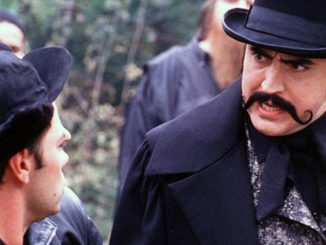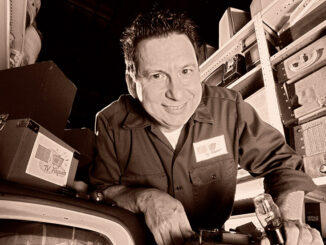
by Michael Goldman • Portraits by Gregory Schwartz
The editors who put together ABC’s Dancing with the Stars each week readily concede that they have a massive job on their hands. Indeed, the seven offline editors who cut reams of story packages together that get rolled into two different types of live DWTS broadcasts each week—a performance show and a results show—use terms like “mammoth beast,” “pressure cooker” and “runaway train,” among others, to describe the volume of material they juggle and the timeline they operate under while cutting various pieces together in time for air on Monday and Tuesday evenings.
The DWTS editing team is smaller than on many of today’s similar reality performance shows. But the show’s editors suggest that the producers’ decision to stick with a deeply experienced team of union editors has made the pressure cooker a smooth and cohesive operation.
“I’ve worked on other shows of this type that have more editors; we are a pretty small crew by comparison,” says David Timoner, the senior member of the team, since he has been with the show since its inaugural season in 2005 (there are two DWTS seasons per year). “But a smaller team has more authorship over the material. And it takes experience to do it—people who can make decisions on their own. What we are cutting here is out on people’s televisions within 24 hours, so we better get it right. It can be stressful, but it’s good for the show, and that’s proven by its success, ratings-wise. Having a union crew of this size really pays off for producers.”
The DWTS editing team is smaller than on many of today’s similar reality performance shows. But the show’s editors suggest that the producers’ decision to stick with a deeply experienced team of union editors has made the pressure cooker a smooth and cohesive operation.
“Making our air date is an enormous challenge with a live show and often requires 16 or more hours a day in editorial,” adds Pam Malouf, ACE, who joined the show in 2006. “The great thing about being a union show is that the editors and assistants are compensated for every hour and minute in overtime and, consequently, work ethics, personal integrity and morale stay high––regardless of cutting-room craziness.”
To ease overtime hours and provide more flexibility, there are seven editors on the show, and they have worked out a methodology that brings, if not calm, then certainly logic and efficiency to a monstrous volume of material on almost impossible timelines.
The Team, the Challenge

The seven editors (of Season 13, 2011) are Timoner, Malouf, Nena-Hsu Erb, Tom Mus-champ, Ned Kerwin, Evan Finn and Greg Fitzsimmons. The idea, of course, is to document the adventures of a group of celebrities as they learn to dance with professional partners, perform live and then compete over the course of a season to see who the top hoofer is. Each year features a spring (March to May) and a fall season (September to November).
The challenge is for the reams of videotaped footage, shot by field producers who follow the celebrity contestants around while they learn the ins-and-outs of their upcoming dances, to be transformed into narrative packages between Wednesday and Monday morning each week. Since the results show is Tuesday night, rehearsing and dramatic moments need to be documented and built into packages, usually of no more than 90 seconds to three minutes in length, that can highlight the contestants’ trials and tribulations.
Usually, editors on the performance show work Wednesday to Sunday, while editors on the results show work Friday to Tuesday. Kerwin and Muschamp, however, work on both shows, and Timoner frequently works a sixth day each week to help with the results show upon finishing his cycle on the performance show.
The show is broadcast live from the CBS Television Center in Los Angeles, and the editing team works there, as well––no more than 1,000 feet from the stage, in fact. They cut their offline packages on Media Composer 3.5.9 (Nitris DX) systems on Hewlitt-Packard Z400 workstations. Assistant editors use two additional Media Composer bays, and the show utilizes three Symphony Nitris DX systems for online/color correction of the packages—work carried out by online editors Yoram Tal and David Maguire and assistant editors Giles Gordon, Chris Pelphrey, Kathy Hinh and Justin Hrobuchak. (A Guild technical director, Charles Ciup, also works on the show, and was nominated for an Emmy Award for his work last season.)
To ease overtime hours and provide more flexibility, there are seven editors on the show, and they have worked out a methodology that brings, if not calm, then certainly logic and efficiency to a monstrous volume of material on almost impossible timelines.
Everything is networked together through 14 terabytes of Avid Unity Storage and, direct from editorial, the various packages broadcast each episode are “pushed” to the stage in an entirely tapeless workflow via fibrewire through the Playback Innovations Pi Control and Media Management System in tandem with EVS XT[2] video servers.
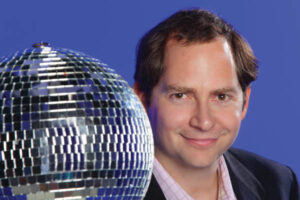
The switch to tapeless delivery of all playback content was significant for the show a couple of years ago, because it handed back extra time to editors to tweak packages, rather than using that time to accommodate tape-based delivery and transfer, according to post-production supervisor Barry J. Ward. He adds that, now, the transfer of a two-minute edited package to the stage takes “only a handful of seconds.”
Packages can range from celebrity profiles, ongoing dramas revolving around dance training, reactions to results and twists and turns, and oddball packages, joke or blooper packages, along with cutting together specially produced events like Group Dance, Team Dance, Marathon Dance and so on, plus various teases, graphics and more. The whole thing requires overnights, overtime, turnaround pay and lots of incredibly hard, detailed work. The pressure comes because the celebrities only get assigned and start learning their new dances on Wednesday, while their storylines have to materialize by Monday.
The Stories
The footage is documentary in nature, and producers have tasked the editors with making real emotion the centerpiece of all their stories. Its no wonder that the mantra around the editing suites is “Let Reality Play.”

“Our work is important because we are the way that the world learns who these contestants are,” explains Malouf. “But the tough part of the packages is that they cannot learn their dances in a day. Most of the footage, especially from the first day of rehearsal, can be quite boring. They are learning to dance over and over again, for hours. That is the dominant footage I get. But, as an editor, I need a story. So we have to go and look for the story—when they fall or twist their ankle or cry or get overcome with emotion. By the third day of rehearsal, things get interesting—they run out in frustration or get upset or joyous––or go somewhere, and we follow them. The important thing is to find the drama, which is why we have to meticulously study the footage.”
Indeed, although story producers provide lengthy tape summary logs (dubbed “stories so far”), the quest for drama forces the editors deeper. And, like many reality shows of this type, producers do intervene to move contestants to different locations and situations in their search for that depth. A contestant might be taken to the beach or a salsa club, for instance.
The training packages are always grueling on such short turnarounds. Those packages are the primary responsibility for editors like Erb, and she says that last-minute changes and new developments can often cause those packages to be revised or changed wholesale on the slimmest timelines possible. But even tougher is when nothing much happens with the various dancing couples whose stories need to be cut together.
“If no obvious storyline presents itself from the previous day’s rehearsal, we sift through all of the rehearsal footage with a fine-tooth comb in order to find something compelling enough to build a story or package around,” Erb says. “Sifting through enormous amounts of verite footage can be quite challenging when you are on a tight turnaround like this show. Since the amount of verite is based on how many hours each celebrity couple rehearses each day, as well as the number of couples that individual editors are assigned, my guess is that each of us probably combs through anywhere from eight to 12 hours of material each day––and that’s just the footage from training rehearsals, not including interviews. So a big part of our job is staying on top of watching the material. And then, once we’ve gone through it, we can start to craft the story out of the highlights that we’ve pulled.”

However, despite all the lengths taken to find storylines, sometimes there simply is no story, or not enough of one. Such scenarios bring out the best in the DWTS editing team. Results show editor Evan Finn, for instance, actually prefers the packages he and his colleagues cut together for the Tuesday results show because “while the Monday performance show has to focus on communicating the story of the contestant’s week, on Tuesday, for the results show, we get to play.”
By that, Finn means that the results show requires fun, entertaining pieces to balance the drama of recapping performances and revealing results. “One week, we’ll do Saturday Night Live-style fake movie trailers or joke commercials,” he offers. “Or we’ll do packages to focus on how contestants deal with stress or tension, or to introduce a new dance troupe, or whatever special feature might be added in a given week. Recently, I cut a heavily experimental package using nothing but percussive sounds from the entire season to build a rap song out of the judge’s comments. Those things can be a lot of fun.”
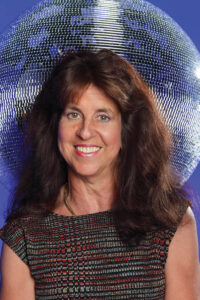
Muschamp, meanwhile, takes charge of many of the show’s special, more technically oriented, packages, incorporating effects or multi-box builds, graphics, text animation and so forth. He says that kind of work requires strategic advance planning. “With such short turnaround, it’s essential that I prepare effects, plug-ins, music and sound effects prior to the season’s start,” he explains. “I’ll often build bins and sequences that I can custom sift within Avid to quickly find what I’m looking for when rushed.”
Although most editors are normally assigned to either the performance or recap show, they all routinely swing around to assist anywhere they are needed, making, they all suggest, DWTS one of the most collaborative editing jobs on network television. Muschamp and Kerwin, for example, put their heads together to revamp their method of cutting one of the most time-consuming parts of the show: the so-called “recap packages.”
“The recap has morphed from one four-to-five-minute package covering the whole previous night, to individual packages for each star—for example, 11 40-second packages, six one-minute packages or three two-minute packages,” Kerwin says. “It’s a lot more work, but I’ve been very fortunate to have the invaluable help of Tom, who stays until midnight [after the performance show ends] and then returns around 6:00 a.m. to help crank those things out. And most mornings, David is also able to help out.”
Previously, Muschamp and Kerwin had to work even longer shifts to complete the recaps in time for airing the next day. However, by getting to work on them immediately as the performance show is ending, they have figured out a less grueling approach.
“On Monday night, I’ll edit the best moments from each dance, the best judge’s comments and a confessional sound bite for each contestant into a sequence,” reveals Muschamp. “While that is going on, Ned trawls all the multi-cam, behind-the-scenes material for nuggets of gold. At 6:00 a.m. Tuesday morning, David, Ned and I will take the behind-the-scenes selects and incorporate them into sequences I’ve created. At this stage, we’ll typically split the packages up and take, for instance, three each.”
Kerwin also creates a master rushes sequence that contains over 20 audio tracks (isolated audio for every celebrity and dancer for the entire live show), and about 10 video angles (four live show isolated audio tracks and multiple backstage cameras), according to Muschamp, who adds, “From this rushes sequence, we add additional backstage reality to the story of each couple’s night.”
Decisiveness

It’s the type of editing that requires lightning-quick decision-making, according to all seven editors. The nature of the work simply “leaves no time to second guess,” says Fitzsimmons, a results show editor.
“I get only two to three days to get a package from concept to a fully executed cut for screening with executive producers,” he continues. “And sometimes, after a screening, if the package doesn’t fit with what the executive producers had in mind, we’ll start again from scratch, sometimes making for late, sleepless nights. But that clock is ticking to air on Tuesday evening. You have to trust your first instincts. That’s another reason why it’s important that this is a union show––it requires such specific expertise and ability to execute under a time constraint.”
All of this work comes in a genre—reality TV—that can be denigrated in some quarters, but all seven editors insist that DWTS involves some of the most difficult editing work around. “In scripted television, it is easier to pick an angle, since they shoot coverage for everything,” says Malouf. “But, in our case, we don’t have cutaways. If a contestant says something brilliant, but it takes two minutes and I have to cut that down, I don’t have a cutaway. I have to steal a cutaway by going over to a dancer, or something along those lines. This type of work is hard to do because you have no coverage and no script. So we are always making something from scratch.”
“Time is a huge challenge,” adds Muschamp. “Producers want the packages to breathe more, and they want more story beats, but they also want the packages to be shorter. So you find yourself trying to lose a minute from a package, but at the same time, trying to make it feel like it isn’t cut too fast. Pacing is probably the biggest challenge on this show.”
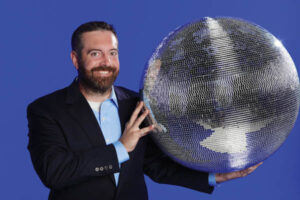
Such challenges—indeed, the entire nature of the show—make DWTS and a handful of others in the same reality category different creatures, from an editing point of view, than almost anything else on network television. Timoner, in fact, finds the work analogous in some respects to what goes on in the broadcast news world. “I’ve always felt it was a little bit like cutting news,” he says. “I’ve never worked in news, but there they have really quick deadlines. It’s a blessing and a curse to crank it out quickly. You can’t nitpick the thing to death. It absolutely will be airing in 24 or 48 hours, so you have to quickly assess the footage and synthesize the storyline.
And it’s very last minute—our stories are documentary-style,” he concludes. They are reacting to what has actually happened in the footage we capture, but unlike many other reality TV shows, we don’t have weeks or months to build the story in post.”




